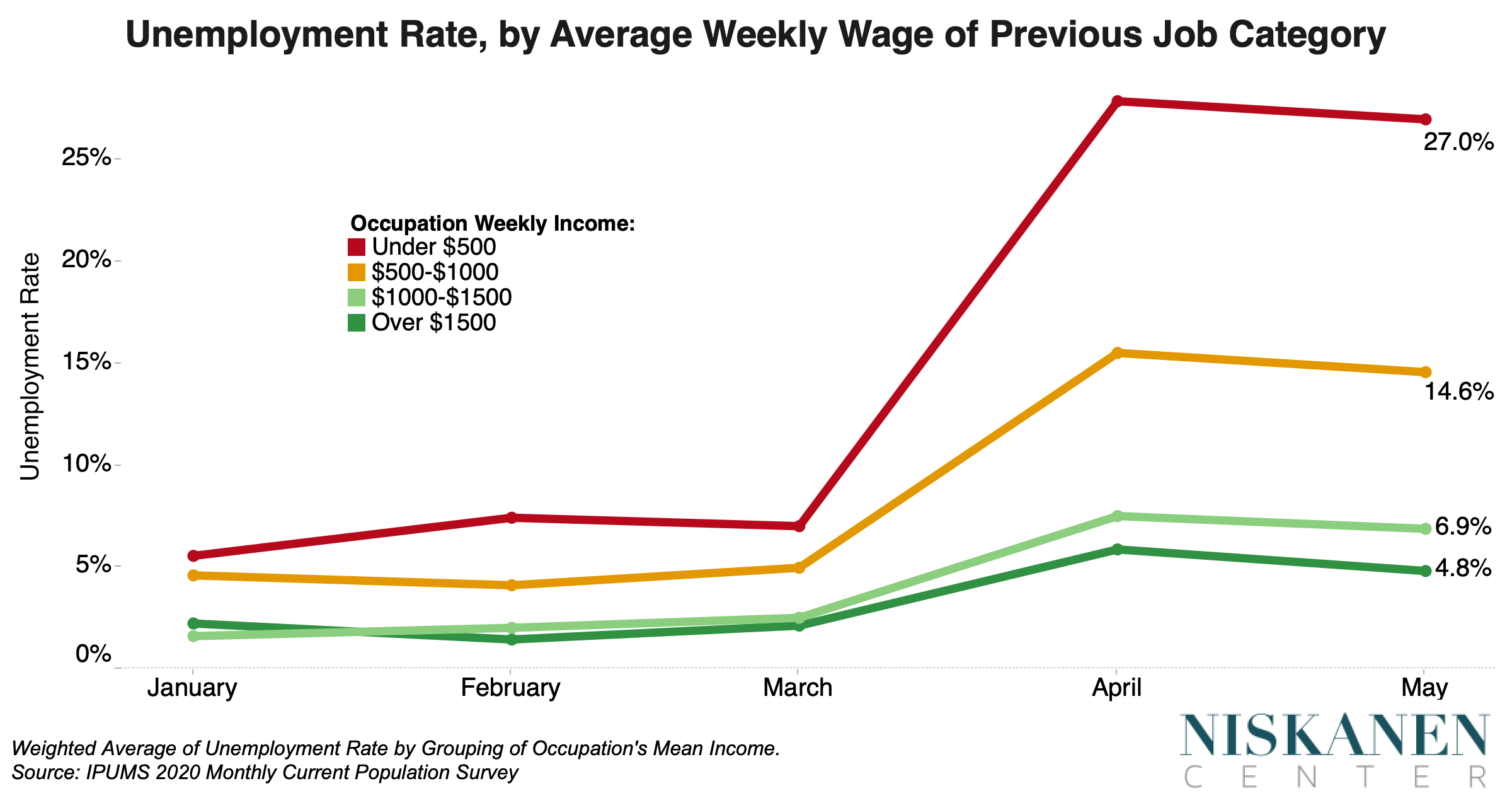The COVID-19 outbreak and subsequent economic lockdowns wrought enormous harm to the U.S. economy. Real economic output declined by 5% in the first quarter of 2020, with the Atlanta Fed currently predicting a 48.5% annualized decline in the 2nd quarter as of June 9th.
Nowhere is this damage easier to see than in the unemployment rate, which climbed to 14.7% in April from its pre-recession low of 3.5% in February. Although recent data covering May has the unemployment rate declining to 13.3%, this employment rebound didn’t necessarily correspond with the occupations that experienced the most extensive employment losses. For instance, the dental industry saw a dramatic rebound in the last month following a sharp decline in April, while lower-wage service sector occupations failed to experience a similar recovery.
Analysis of the latest monthly Current Population Survey (CPS) helps to illustrate the uneven jobs recovery. The CPS provides occupational categories of unemployed individuals based upon their most recent job. Grouping reported occupational categories by income helps to clarify where employment gains are taking place. Occupations with average weekly incomes under $500 did not receive an employment rebound commensurate with the catastrophic job losses they experienced in the previous month.

While some remain optimistic about a so-called “V-shaped” recovery, it is important to keep in mind that stock market valuations and highly paid professions are not the whole economy. The U.S. economy is still suffering from Great Depression-level unemployment. It’s just not evenly distributed.
Enacting a reemployment bonus could help ameliorate the dire situation currently faced by low-wage workers. One such plan from Sen. Rob Portman (R-Ohio) would provide a $450 per week bonus to laid-off workers who return to work before July 31, in line with the expiry of the $600 per week Federal Pandemic Unemployment Compensation (FPUC). Because emergency unemployment benefits often exceed workers’ pre-crisis wages, Portman’s reemployment bonus would ensure that getting back to work doesn’t mean taking a pay cut.
Yet reducing work disincentives in FPUC is just a start. To quickly close an employment gap this large will require aggressive active labor market policies like wage subsidies and job search supports, particularly for workers in sectors facing a semi-permanent contraction. As Congress negotiates the next phase of recovery legislation, we can’t lose sight of the fact that this economic crisis is far from over, especially for lower-wage and working-class families.